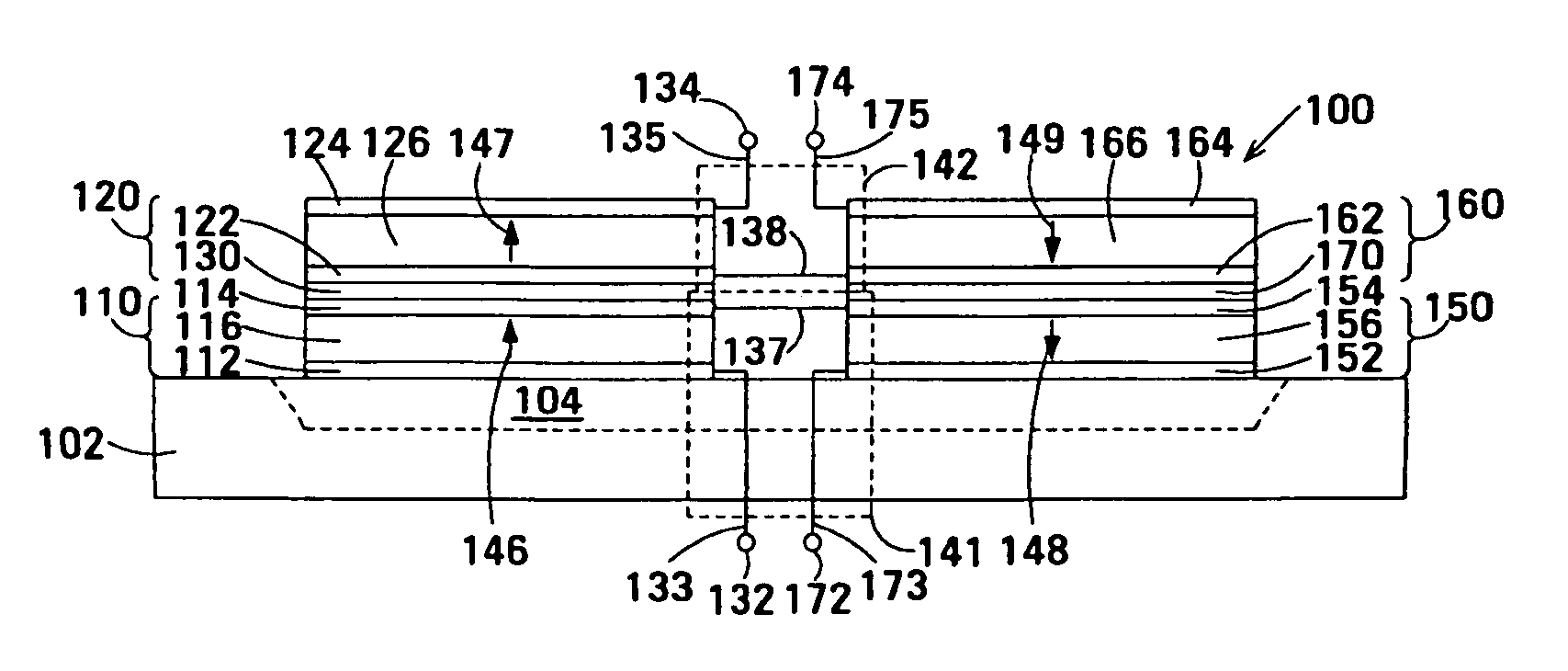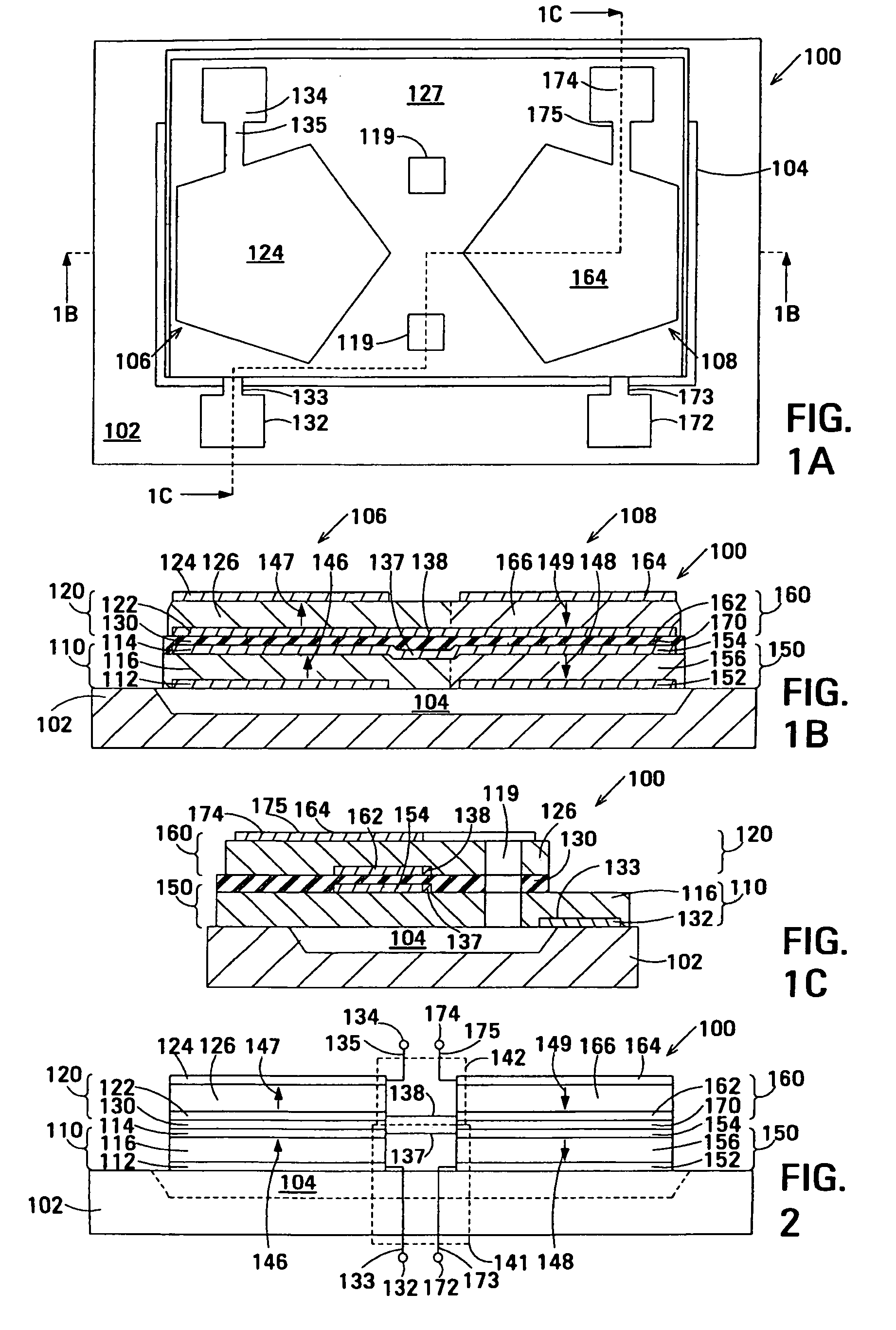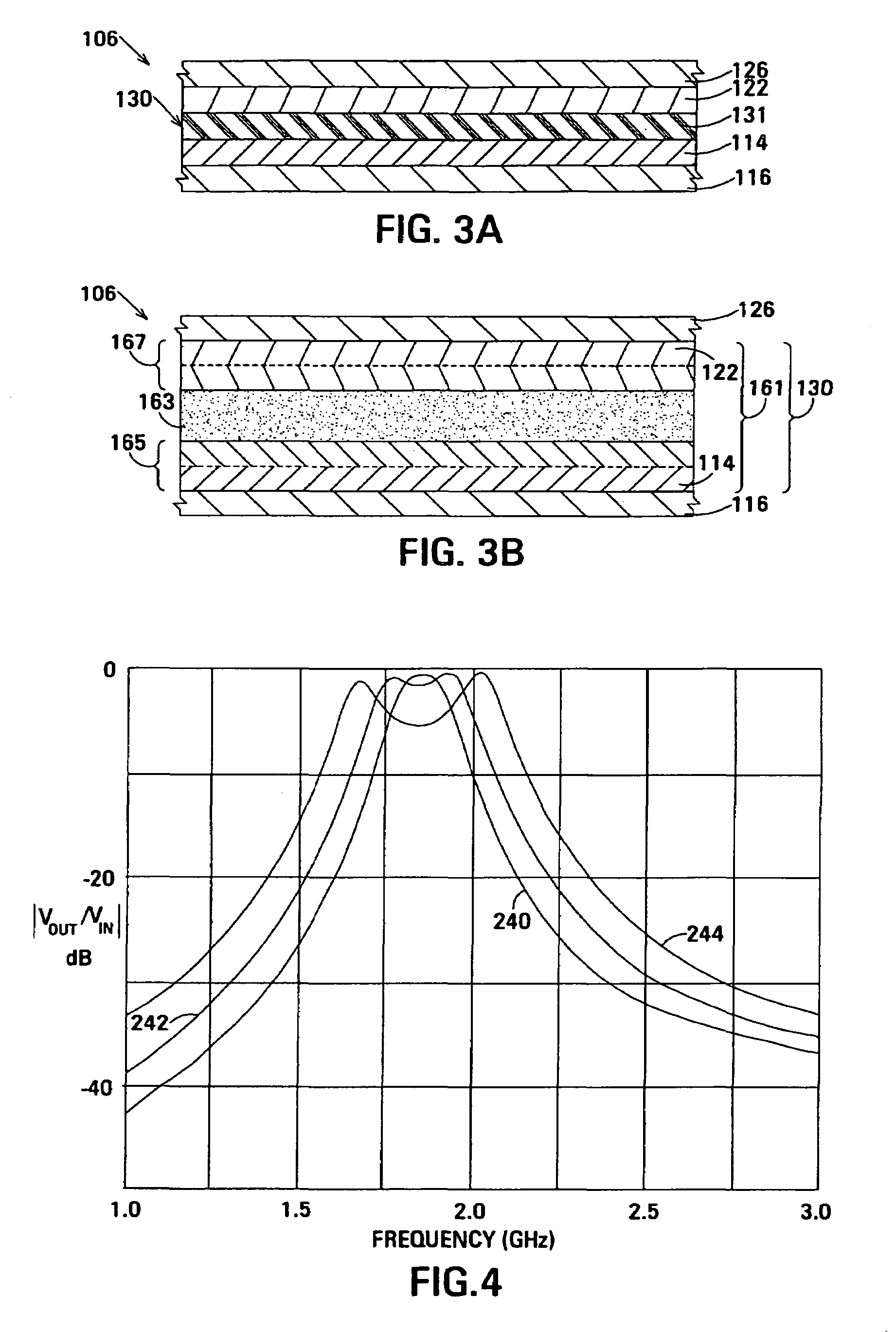Method of making an acoustically coupled transformer
a transformer and acoustic field technology, applied in the direction of generator/motor, piezoelectric/electrostrictive device material selection, piezoelectric/electrostrictive device, etc., can solve the problems of coil-based transformers becoming impractical, not all transformers have all of these properties, etc., to achieve low manufacturing cost, low insertion loss, bandwidth sufficient
- Summary
- Abstract
- Description
- Claims
- Application Information
AI Technical Summary
Benefits of technology
Problems solved by technology
Method used
Image
Examples
Embodiment Construction
[0026]Film bulk acoustic resonators (FBARs) are disclosed by Ruby et al. in U.S. patent No. 5,587,620 entitled Tunable Thin Film Acoustic Resonators and Method of Making Same, now assigned to the assignee of this disclosure and incorporated in this disclosure by reference. Ruby's disclosure also discloses a stacked film bulk acoustic resonator (SBAR) composed of two layers of piezoelectric material interleaved with three planar electrodes. Ruby's SBAR can be regarded as being composed of a stacked pair of FBARs in which one electrode is common to both FBARs, and will be referred to as a common-electrode SBAR. The common electrode renders the common-electrode SBAR incapable of linking balanced to unbalanced circuits and vice versa and of providing electrical isolation between primary and secondary. Moreover, the common electrode SBAR exhibits an extremely narrow pass bandwidth that makes it unsuitable for use in most applications. The narrow pass bandwidth is the result of the common...
PUM
| Property | Measurement | Unit |
|---|---|---|
| insertion loss | aaaaa | aaaaa |
| thickness | aaaaa | aaaaa |
| frequency | aaaaa | aaaaa |
Abstract
Description
Claims
Application Information
 Login to View More
Login to View More - R&D
- Intellectual Property
- Life Sciences
- Materials
- Tech Scout
- Unparalleled Data Quality
- Higher Quality Content
- 60% Fewer Hallucinations
Browse by: Latest US Patents, China's latest patents, Technical Efficacy Thesaurus, Application Domain, Technology Topic, Popular Technical Reports.
© 2025 PatSnap. All rights reserved.Legal|Privacy policy|Modern Slavery Act Transparency Statement|Sitemap|About US| Contact US: help@patsnap.com



